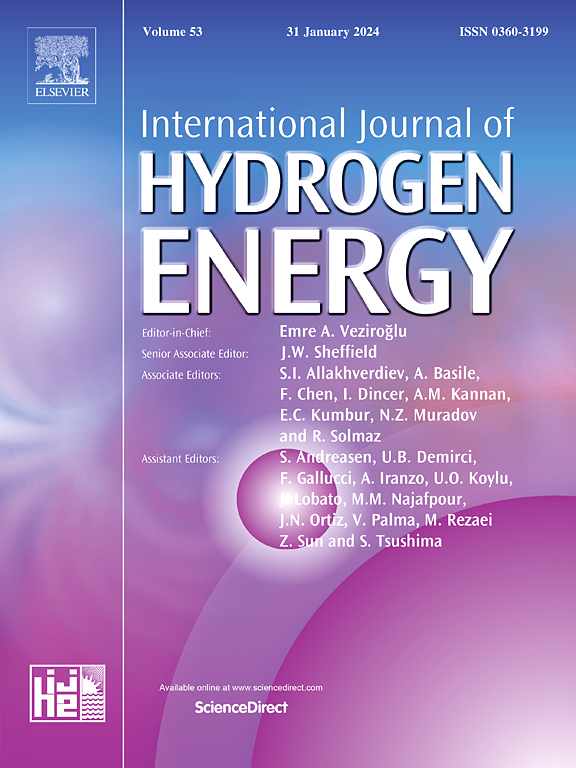用于合成氨生产的新型双型反应器的设计与建模
IF 8.1
2区 工程技术
Q1 CHEMISTRY, PHYSICAL
引用次数: 0
摘要
合成氨生产是最基本的石化工艺之一。本文的重点是这一过程的核心--氨合成反应器。首先,对 Kellogg 公司设计的用于合成氨生产的工业固定床反应器进行了建模和模拟。接着,提出了一种双型反应器,以克服氨合成反应放热的平衡限制。利用类似工业反应器设计方法的规则和粒子群优化(PSO)- 差分进化(DE)优化方法,获得反应器的最佳设计参数和操作条件。反应器的长度、每个反应器中的管子数量、气冷反应器的直径和冷却水温度被视为优化的决策变量。对这些变量进行优化可使氨产量最大化。此外,还研究了同流和逆流流动模式对拟议反应器效率的影响。采用一维伪均相模型模拟稳态条件下的反应器。控制微分方程形成了一个边界值问题,并采用射流法求解。结果表明,所开发的双型反应器满足了所有设计限制。此外,与传统的 Kellogg 反应器相比,这种新型反应器每天可增加 574 吨氨的生产能力。本文章由计算机程序翻译,如有差异,请以英文原文为准。
Design and modelling of a novel dual-type reactor for ammonia production
The ammonia production is one of the most essential petrochemical processes. This article focuses on the heart of this process, the ammonia synthesis reactor. First, an industrial fixed bed reactor for ammonia production, designed by Kellogg's company, is modeled and simulated. Next, a dual-type reactor is proposed to overcome the equilibrium limitations of the exothermic ammonia synthesis reaction. The rules of similar industrial reactor design methodology and the Particle Swarm Optimization (PSO)- Differential evolution (DE) optimization method are used to obtain the reactors' best design parameters and operational conditions. The length of the reactors, the number of tubes in each reactor, the diameter of the gas-cooled reactor, and the cooling water temperature are considered decision variables for the optimization. These variables are optimized to maximize the ammonia yield. Furthermore, the effect of co-current and countercurrent flow patterns on the efficiency of the proposed reactor is investigated. A one-dimensional pseudo-heterogeneous model is applied to simulate the reactor at steady-state conditions. The governing differential equations form a boundary value problem and are solved by the shooting method. The results show that the developed dual-type reactor satisfies all the design limitations. Furthermore, this novel reactor increases the ammonia production capacity by 574 tons per day compared to the conventional Kellogg reactor.
求助全文
通过发布文献求助,成功后即可免费获取论文全文。
去求助
来源期刊

International Journal of Hydrogen Energy
工程技术-环境科学
CiteScore
13.50
自引率
25.00%
发文量
3502
审稿时长
60 days
期刊介绍:
The objective of the International Journal of Hydrogen Energy is to facilitate the exchange of new ideas, technological advancements, and research findings in the field of Hydrogen Energy among scientists and engineers worldwide. This journal showcases original research, both analytical and experimental, covering various aspects of Hydrogen Energy. These include production, storage, transmission, utilization, enabling technologies, environmental impact, economic considerations, and global perspectives on hydrogen and its carriers such as NH3, CH4, alcohols, etc.
The utilization aspect encompasses various methods such as thermochemical (combustion), photochemical, electrochemical (fuel cells), and nuclear conversion of hydrogen, hydrogen isotopes, and hydrogen carriers into thermal, mechanical, and electrical energies. The applications of these energies can be found in transportation (including aerospace), industrial, commercial, and residential sectors.
 求助内容:
求助内容: 应助结果提醒方式:
应助结果提醒方式:


